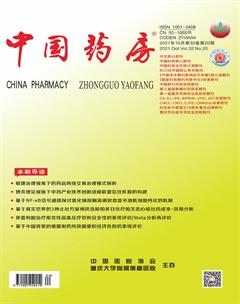博弈理論視角下中藥產業技術創新戰略聯盟信任機制的構建
華東 史安娜



中圖分類號 R288;R95 文獻標志碼 A 文章編號 1001-0408(2021)20-2438-07
DOI 10.6039/j.issn.1001-0408.2021.20.02
摘 要 目的:為促進我國中藥產業技術創新戰略聯盟(以下簡稱“中藥產業聯盟”)的穩定運行和中藥產業的轉型升級提供參考。方法:運用博弈理論,構建道德自律下中藥產業聯盟成員合作信任的初次博弈、重復博弈模型以及外部約束力量下的混合策略博弈模型,分析中藥產業聯盟信任機制構建的主要影響因素,并為我國中藥產業聯盟信任機制的構建提出對策與建議。結果與結論:初次博弈模型和有限次重復博弈模型均顯示,(不信任,不信任)的策略組合為唯一納什均衡,此時聯盟整體得益最小,聯盟創新效率和穩定性十分低下。無限次重復博弈模型顯示,(信任,信任)的策略組合為該重復博弈的均衡路徑,博弈雙方因守信而收獲的長期得益大于失信所帶來的得益,此時聯盟總得益最大,但需要博弈雙方有充分的耐心和足夠多的博弈次數。混合策略博弈模型顯示,在背信損失足夠大且上不封頂的情況下,聯盟成員均選擇彼此信任,(信任,信任)的策略為唯一納什均衡;在背信損失比較小且越接近上限時,聯盟成員越不愿意選擇守信,此時外部約束力量較弱。博弈次數的多少、博弈信息的完全性和外部約束力量的強弱是影響中藥產業聯盟信任機制構建的關鍵因素。建議中藥產業聯盟內部應建立高效的溝通體系、透明的信息公開制度和完善的獎懲制度,并充分發揮政府及非政府第三方的作用,以促進我國中藥產業聯盟的穩定運行。
關鍵詞 博弈理論;中藥產業;產業技術創新戰略聯盟;信任機制
Construction of Trust Mechanism about TCM Industrial Technology Innovation Strategic Alliance from the Perspective of Game Theory
HUA Dong1,2,SHI Anna1(1. Business School, Hohai University, Nanjing 210098, China;2. School of Health Economic and Management, Nanjing University of TCM, Nanjing 210023, China)
ABSTRACT? ?OBJECTIVE: To provide reference for the stable operation of TCM industrial technology innovation strategic alliance (called “TCM industrial alliance” for short) as well as the transformation and upgrading of TCM industry. METHODS: The game theory was adopted to construct the initial game model and repeated game model of cooperative trust among the members of TCM industrial alliance under moral self-discipline, and mixed strategy game model under external constraints. The main influential factors of trust mechanism construction for TCM industrial alliance were analyzed, and countermeasures and suggestions were put forward for the trust mechanism construction of TCM industrial alliance in China. RESULTS & CONCLUTIONS: Both the initial game model and the finite repeated game model showed that the strategy combination of (distrust, distrust) was the only Nash equilibrium. At this time, the overall benefit of the alliance was the smallest, and the innovation efficiency and stability of the alliance were very low. The infinite repeated game model showed that the strategy combination of (trust, trust) was the equilibrium path of the repeated game. The long-term benefits of both sides of the game due to trustworthiness were greater than those obtained by dishonesty. At this time, the total benefits of the alliance were the largest, but both sides of the game needed to have sufficient patience and enough game times. The mixed strategy game model showed that when the loss of breach of trust was large enough and there was no upper limit, the alliance members chose to trust each other, and the strategy of (trust, trust) was the only Nash equilibrium; when the loss of breach of trust was relatively small and closer to the upper limit, the more reluctant the alliance members were to choose to keep faith, and the external constraint force was weak. The number of games, the completeness of game information and the strength of external constraints were the key factors to establish alliance trust mechanism. It is suggested that an efficient communication system, transparent information disclosure system and perfect reward and punishment system should be established within TCM industrial alliance, and the role of government and non-governmental third parties should be fully played to promote the stable operation of TCM industrial alliance in China.

